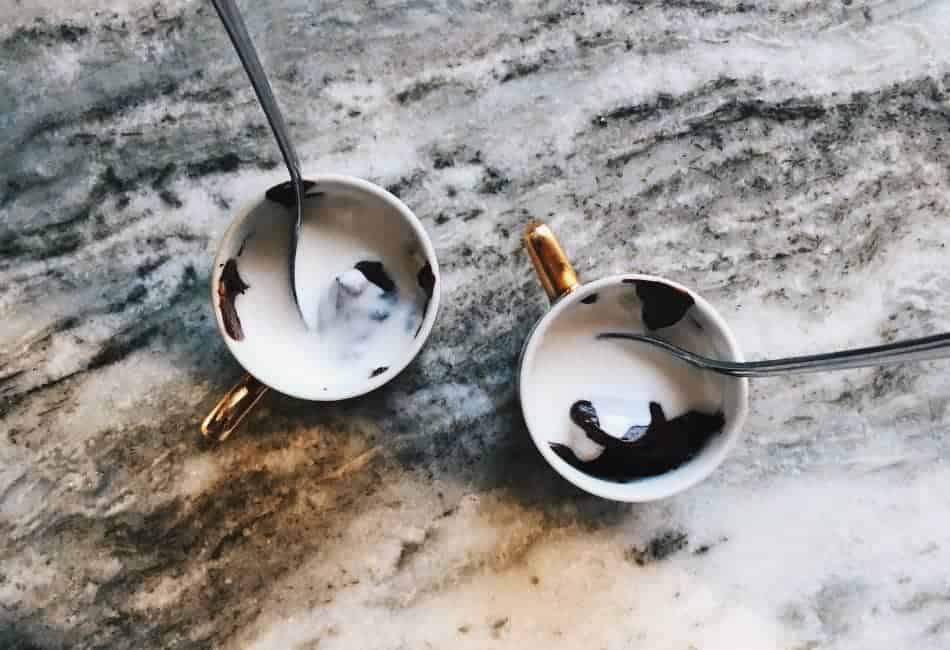What is one of the most popular types of stone in America? Marble. It’s also one of the oldest with records dating back to ancient Rome and Greece.
The timeless beauty of marble has made it a favorite for centuries, but what you may not know is that there are many variations when it comes to marble color.
From lemon yellow and pumpkin orange to deep purple or even black, marble comes in a variety of colors that can be used as an accent piece or focal point in any room. Read on to find out more about how marble gets its stunning hues.
So how does marble get its color? The main ways marble gets its color are;
- Marble Gets Its Color From The Mineral Present During Its Formation
- Marble Takes On Different Colors As It Ages
- Marble Gets Its Color From Where It Is Mined
- Marble Gets Its Color From Dyes
To learn more about how marble gets its color, keep reading this article. I will also share some of my best tips on how to maintain the color of your marble surfaces.
1. Marble Gets Its Color From The Mineral Present During Its Formation
The color of marble comes from the minerals present during its formation. The process can take millions, even billions of years before the colors are visible on the surface. This is what gives each type its unique hue and patterning.
Minerals like iron oxide, manganese dioxide, and calcite are the most common minerals responsible for marble’s coloring.
Iron is one of the main components in many types of stone such as granite and limestone; it gives them their earthy hues like rust-brown or olive green.
When these minerals come into contact with water during formation, they react to create different colors depending on which type of mineral was present.
The lack of oxygen will also affect this process because without it there can be no oxidization (rusting) that would change how a surface appears.
2. Marble Takes On Different Colors As It Ages
Marble may also get its color as it ages. For example, if it’s been outside for a long time the surface will become darker and take on more of orange color as opposed to its original white or light-colored appearance.
If it’s in contact with salt water over time, then crystals are deposited which can also make marble appear differently.
When different minerals come into contact with water during formation, they react to create different colors depending on which type of mineral was present.
The lack of oxygen will also affect this process because without it there can be no oxidization (rusting) that would change how a surface appears.
For example, if it has been outside for a while in the sun the marble pieces will have browner shades while newer ones may show more intense colors like yellow or blue-green hues found in some limestone species.
Marble can be white because there usually aren’t any other minerals mixed into them that contribute to a specific coloration when they’re forming.
Typically this means a pure form of calcite (calcium carbonate). It’s not uncommon for these stones to be dyed into a different color.
3. Marble Gets Its Color From Where It Is Mined
Marble varies greatly in hue based on where they are mined because each area produces unique deposits containing different minerals and metals that will react differently once extracted.
Those who visit Rome often marvel at the varying shades of white, gray, and black that adorn the buildings finished with marble.
This is because marble from Carrara contains no sulfur, unlike stone mined in other parts of Italy. Carrara is a metamorphic rock that is highly porous and easy to work with, which makes it perfect for sculpture.
In contrast, the marble from Maschito contains high levels of sulfur, making its tones darker than those in Rome.
The lack of sulfur also means there are fewer holes or pores inside this type of marble so it can be difficult to sculpt on as well.
This creates an interesting dilemma when deciding what shade you want your stone – if you choose Carrara then you will have a lighter color but may not like how rough or bumpy the finished product looks because of all the smaller pores; whereas choosing a more pithy and solid-textured marble would yield a much darker result at no extra cost!.
4. Marble Gets Its Color From Dyes
Marbles also get their color from any dyes and stains that are added to the stone. This is why you may find some stones in different colors such as red, green, black or even blue!
The dyes used seep deeply into the pores of the marble and form a chemical bond that allows the marble to dye for a long time without any color loss. This is one of the reasons why marble is so popular in kitchens and bathrooms!
Since marbles are porous, it’s easier for stains or dyes to get into those tiny pores which can alter the color.
For example, you may notice some black or green staining on a white stone because these types of dyes seep more deeply into that type of marble than others.
Stains will eventually wear off but they’re not always easy to remove if your regular sealing is done.
The process of adding dye substances usually happens after marble has been completely quarried from its original block form. They can be mixed with dye-stuffs like indigo, madder root, kermes, and so on.
This will create bright shades of color for a more vibrant look – this also makes it easier to identify individual blocks when they have all gone through the same process!.
However, if there were any extra minerals within the surface layer then they would often get stained by whatever colored substance was used during processing.
Similarly, marble may get its color through painting. This is usually done when marble has already been cut into blocks. Painting may be used to make them more uniform in shape and size.
Or it can also help preserve the material by covering it against dirt, dust, and other types of grime that would otherwise accumulate after handling.
For this reason, there are some varieties of marbles like Onyx Marble (a type from Italy) which have a naturally dark color due to being painted over with black paint all-over during processing.
Marble gets its color through dye substances mixed with colors like indigo or madder root before cutting; painting sometimes happens afterward as an extra preservation measure.
Tips On How To Preserve The Color Of Your Marble
- Clean your marble with a damp cloth and store it in an area where the temperature is cool.
- Use coasters or placemats to protect furniture from being stained by condensation; use a coaster for every drink consumed on marble, just like you would do so on any other type of surface.
- Try not to place heavy items directly onto the marble since they will leave permanent chips or cracks that are difficult or costly to fix.
- Wipe up spills as quickly as possible before they have time to stain your stone and make sure liquids don’t remain trapped underneath the object placed on top of them (since this can lead to discoloration).
- Do not let children draw on or otherwise scuff into the stone since this will also lead to permanent damage.
- Don’t use abrasive materials such as steel wool, scouring powder or any kind of powdered cleanser on the surface because they can scratch marble’s porous top layer and permanently alter its appearance.
- Vacuum frequently with a soft brush attachment in order to pick up dust before it has time to settle deeply into the pores.
- Take care when using chemical sprays intended for other surfaces like linoleum or vinyl tile; these products often contain strong solvents that may react badly with marble by etching away at its polished exterior finish.
- Be sure to wipe up spills immediately since marble’s porosity means any liquid will seep into the surface and not be able to evaporate.
- Don’t use a lot of hot water or very strong soaps which can remove some of the colorants in the marble finish.
- Some people recommend an occasional application of mineral oil to maintain its near-perfect condition.
- Marble dusting powder may be used for general upkeep but should not be applied too often since overuse will damage the finish by causing streaks or dull patches through continual abrasion from pressure when wiping.
- Polish sparingly because that will also remove some of the colorants in the stone’s natural patina; only conduct this chore every few months or so.
- In the event of spills, it is best to use a mild soap and water solution for cleaning because solvents can cause more serious damage such as marble etching which will permanently remove colorants from the surface.
- If any scratches are too deep then it is possible they cannot be repaired; in this case, you should consider replacing your stone with another piece that has not been damaged by abrasion or heavy traffic wear.

